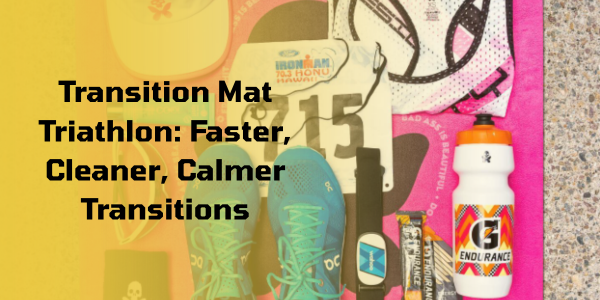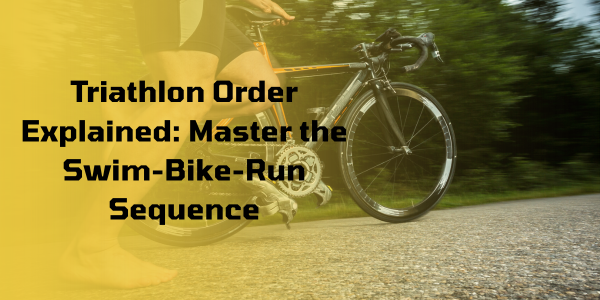Calm Water. Clean Lines. Race-Day Confidence.
You don’t need monster yardage—you need a repeatable system: breath timing, body line, and a plan that scales. This is your coach-built blueprint from first lap to finish chute—built for busy athletes who want receipts.
Why most beginners struggle in the swim—then stop struggling
It isn’t your lungs; it’s your timing. Breath late, hips drop, drag skyrockets. We flip that script with two levers you control today: a clean body line and continuous exhale. Pair that with short, evidence-minded sets and you’ll move from chaos to control—fast.
For big-picture gear mindset and setup sanity, this triathlon essentials gear blueprint keeps your kit tight and your head clear.
Baseline & safety in ten minutes
Quick self-check
- Swim 200m easy (RPE 4/10). Note split and how you feel 60 seconds later.
- Gear: well-fitted goggles, short-blade fins, pull buoy, optional snorkel, and a tempo trainer.
Open-water sanity
Practice sighting every 6–8 strokes in the pool (peek just the goggle line). On race week, do two short open-water entries to normalize temperature and visibility.

Wetsuit neck, underarms, and inner thighs are classic hotspots. If you want the deep-dive on formulations, the science behind anti-chafe sticks explains why protection matters before you hit the water.
Bonus: snag our free anti-chafing stick for runners promo if it’s live—it disappears fast during race season.
Mechanics that actually move the needle
Body line first
Neutral head, long spine. Think “press the chest, float the hips.” Kick is a stabilizer, not a motor. If your shoulders protest on hard days, here’s why and how to fix it: why do my shoulders hurt when I run.
Breath timing
Exhale underwater, inhale during rotation—never hold your breath. Use the 10-breath reset (exhale on 3, sight on 6) when anxiety spikes.
Drills with purpose
- 6-1-6: Balance and rotation harmony.
- Fist drill: Forces forearm to “become the paddle.”
- Catch-up with snorkel: Cleans up timing without breath panic.
- Scull #1: Feel the front-end “grip” on the water.
What does chafe actually look like under training load?
Don’t guess. See this short visual: what does chafe look like. Recognize early, fix quickly, keep training.
The C.A.L.M. framework (Streetlight original)
Cadence
Find the stroke-rate band you can hold in chop. A tempo trainer makes this ridiculously simple.
Alignment
Head level with spine, eyes down. Reduce wiggle = reduce drag. For transitions that respect skin and speed, the triathlon transition bag guide maps the small wins.
Lung timing
Continuous exhale prevents CO₂ spikes. Two-stroke on rough water days, three-stroke when it’s glassy.
Momentum
No dead spots: catch → press → finish. If friction is your limiter, compare options in the anti-chafe solutions collection.
Pool → open water: a zero-anxiety progression
Sighting ladder (2 weeks)
| Set | Frequency | Note |
|---|---|---|
| 8×50 easy | Every 6 strokes | Peek with goggle line only |
| 6×75 steady | Every 8 strokes | Hold body line |
| 4×100 aerobic | Every 10 strokes | Add buoy turn at flags |
Starts, turns, exits
Start wide if you’re new. On turns, sight early and take the outside if packs stack. Exiting, dolphin until knee-deep, then power-walk to upright. Want a full race-day packing flow? See the triathlon bag 2025 guide.
Hydration matters even before you touch the water—check our triathlon hydration lineup for bottle setups that actually stay put.
Pacing you can trust (goodbye, watch panic)
Run a CSS test
400/200 with full recovery between, then set your training bands off CSS. If you’re juggling run build too, this 25K trail run training plan plays nice with two swims per week.
RPE cheat sheet
- RPE 3–4 Technique focus, long rests, clean shapes.
- RPE 5–6 Aerobic work, sighting reps baked in.
- RPE 7–8 Threshold ladders; tiny rests, high quality.
Beginner triathlon swim workouts: a 4-week, 2–3 day plan
Each session ~35–45 minutes. Scale distances down 20% if needed. Integrate one brick simulation weekly.
Week 1–2 (foundation + calm)
- Session A: WU 200 easy + 4×25 build. Skill 6×25 6-1-6 (20s). Main 6×50 pull @ CSS+15/100 (20s). CD 100.
- Session B: WU 300. Skill 4×25 fist (15s). Main 8×50 @ CSS+10/100 (15s), sight 2× each 3rd rep. CD 100.
Week 3–4 (momentum + control)
- Session C: WU 200 + 4×25 scull #1. Main 3×(200 steady + 4×25 fast), stand quickly after each set, 1′ barefoot jog (brick sim). CD 150.
- Session D: WU 300. Main 3×(4×50 @ CSS+5/100, 15s) then 2×100 with sighting every 8. CD 100 easy backstroke.
Race-day swim plan (sprint & olympic)
Start smart
Nervous? Seed yourself on the outside and count a clean 10 strokes before your first sight. For a full checklist across S/B/R, use our triathlon transition bag checklist 2025.
When things go sideways
- Goggles leak → eyes closed 3 strokes, roll, reseat once, resume cadence.
- HR spikes → 10-breath reset (exhale on 3, sight on 6).
- Packs clog → swing wide, accelerate 6 strokes, settle back to band.
Layer on a full plan? Start here: 4-week sprint triathlon training plan and its companion 4-week sprint triathlon training program.
Transition skin & kit checklist
T-12h
- Label bottles and gels; lay kit; pre-roll socks.
- Drop a Mini in each bag: Swim • Bike • Run.
For more gear smarts, skim our essential triathlon gear guide.
Pre-swim
- Apply to neck/underarms/inner thighs.
- Double-cap (personal cap under race cap) for goggle security.
Curious how sticks compare to gels? Read the anti-chafe gel guide and chafer gel explained for triathletes.
T1 & T2
- Quick towel, re-apply if salty or humid.
- Scan hotspots before the run cadence builds.
If you want brand-level science, see our anti-chafe stick for running.
Common beginner errors (and fast fixes)
- Head lifts during breath → hips sink: Fix with snorkel + 6-1-6.
- Breath holds → panic: Fix with continuous exhale and the 10-breath reset.
- Overkicking → fatigue: Fix with pull buoy and high-elbow catch focus.
- Spinny arms → no distance per stroke: Fix with fist drill + tempo cap.
Want a broader primer? This chafe stick running guide translates cleanly to long swims and humid transitions.
Quick FAQs
How many sessions a week?
Two is enough to build; three is ideal to groove timing, endurance, and confidence.
Wetsuit or no wetsuit?
Cool water and legal? Yes—buoyancy is free speed. Practice twice in it before race day.
What if I need to stop?
Flip on your back, breathe, sight, and rejoin. Calm is a strategy.
Digestible training stories land weekly via the Three-Stride Tribune—bite-size, high-signal, no fluff.
Resource library & deeper dives
Grab the essentials, keep the calm
You’re building a habit loop: pack → pace → protect. For product specifics and friction-fighting nuance, start with our shoulder mechanics callouts and then browse hydration options for endurance. If you want just the facts on performance balms, read the Streetlight advantage.
One last sanity check before you click “Register”
Ask yourself:
- Can I breathe calmly for 200m without spikes?
- Do I know my CSS band and sighting ladder?
- Do I have a friction plan for neck/underarms/thighs?
If you want a single page that unites gear, mindset, and transitions, this gear blueprint plus our anti-chafe gel guide is the move.

Further reading for the curious (and the fast)
Prefer the lab notes? Compare formats and ingredients with the ultimate running anti-chafe guide, then skim why do my teeth hurt when I run (yes, it’s a thing). For a broader culture hit, our newsroom-style digest lives here: The Three-Stride Tribune.



